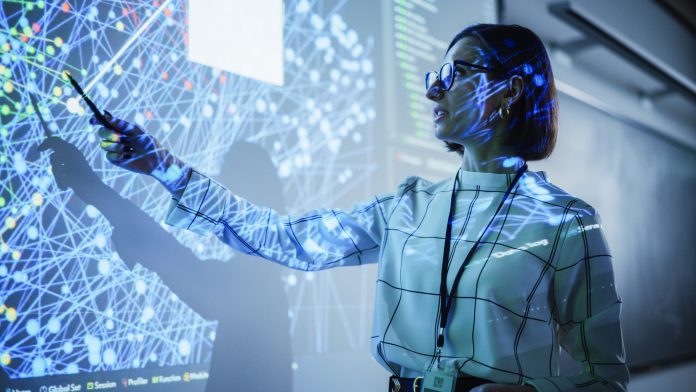Dr. Robert Harrison, the Director of Education and Integrated Technology at ACS International Schools, addresses the potential for enhancing classrooms across the UK through the integration of AI in education
As artificial intelligence (AI) continues to filter down into every corner of society, the UK cannot afford to navigate this brave new globally-connected world in splendid isolation – especially in the education sector. The number of UK teachers using generative AI increased from 31% in 2023 to 47.7% in 2024, with many already advancing their practice by lightening their workload, sparking creativity, and designing more personalised opportunities for learning. This is a global opportunity, and teachers must be at the centre of development and debate.
AI providing tailored educational support
The use of AI in education has the potential to support the government’s mission to break down barriers to opportunity for every child by providing a cost-effective and highly individualised tuition tailored to pupils’ individual needs. Tutors powered by generative AI,
directed by skilled practitioners, using research-informed pedagogical practices, rooted in clear instructional standards could be game changes, if we can successfully reach across entrenched digital divides. Some technology developers are already working with teachers to create tools to generate real value for children and adults, providing blueprints for teacher-friendly platforms that engage students effectively.
There is also an even broader scope for AI to provide learning optimisation nationally, thanks to its ability to monitor and apply insight to large data sets for schools, classes, and even countries to inform the teaching process. Here in the UK, we have at our disposal data from hundreds and thousands of students and schools that could be harnessed through AI to provide input into the national curriculum (and drive forward pedagogical practice) that enhances learning and teaching at scale. The future of schooling will inevitably include teaching children how to use AI to become more effective and efficient lifelong learners.
AI in education: Adding value to young people’s futures
The next generation needs to understand AI because human-machine interfaces will only become more important – at home, in schools, and throughout the workplace. A national education focus on AI will engage academic communities in core questions that will shape societies going forward.
The rapid deployment of AI can stimulate inquiry into exciting new essential questions. What is computational thinking? How do algorithms work? What’s going on inside the ‘black box’ of AI? How do we ensure that humans are always in the loop? Generative AI is an invitation not only to careers in computer science, but a provocation for ethical reflection and social change.
A new education strategy is required that not only puts AI to use in education, but also reframes educational objectives. While most students will never write the code or build the systems that make AI work, they do need to understand the basics of how AI works, and how we want to use emerging machine intelligences.
This is not a far-future debate. In the U.S., 40% of teenagers already use generative AI to help with school assignments. So, students need to know how to use AI responsibly and efficiently – and how to keep on adapting to its rapid development and application across a huge range of human activity.
Last year, the Nobel Prize for Physics was awarded to two scientists whose research into machine learning helped pave the way for the technology. Scientists are improving our understanding of biology, and doctors are diagnosing diseases with AI tools that will save lives. Artists live through another upheaval of creative boundaries and economic standards, transforming culture and challenging our ideas about ingenuity and ownership. Educators cannot afford to be left behind.
Lightening the workload for teachers
AI isn’t just providing support for students. Teaching is a demanding profession, often with extensive marking responsibilities. Time-intensive and repetitive administrative tasks prevent many teachers from doing what they love: creatively designing novel ways to engage their students in learning. We should not be dismissive of AI’s support in terms of inspiration – new ideas and opinions can be mediated by AI’s efficiency and ability to reach around the world, bringing into each classroom the best creative ideas, most reliable strategies, and highest orders of thinking.
AI can be especially valuable for helping teachers create lesson plans. Once teachers know how to work with the prompts, the ideas suggested by AI become far from generic and, over time, can be tailored to specific student classes and cohorts. AI applications have already been deeply trained to help teachers address learning differences; they provide content and assessments that meet a range of needs. Every teacher can have a personal assistant and valuable thought partner on demand at a meagre cost.
While developments in AI are racing ahead, we haven’t yet had enough time as an industry to take stock, understand and communicate limits, and deal with the next iteration of old problems (bias, misinformation and critical digital literacies, academic integrity, curriculum change – just to name a few). While it’s important to try things and realise value as soon as possible, reflecting on the structural, procedural, and fundamental curriculum questions raised by generative AI is essential.
A single national application – driven from the top and living outside the complex social-emotional-cognitive context of student-teacher relationships – will be an expensive experiment with a high risk of failure. If the value of AI is to be realised in the English educational system, teachers and students must be the humans in this loop.











